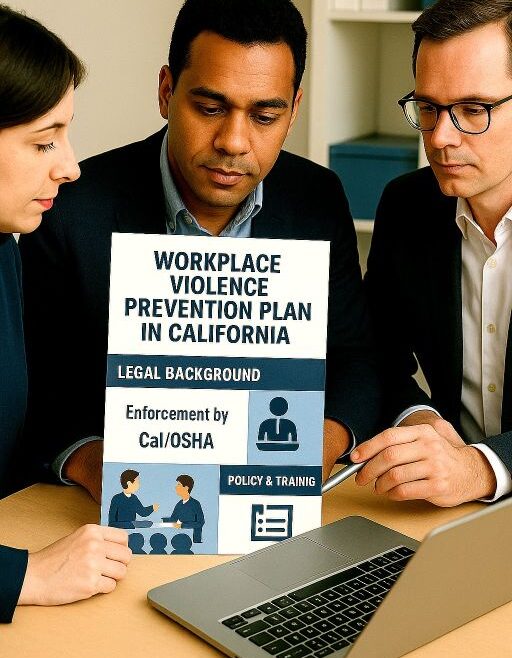If you are already doing business in California, you probably know about California Senate Bill 553 (SB 553) – signed into law on September 30, 2023 – that imposes mandatory workplace violence prevention obligations on most employers operating in California. The law is enforced through the California Occupational Safety and Health Administration (Cal/OSHA) and applies broadly to covered employers, with only narrow exceptions.
Who is a Covered Employer?
SB 553 applies to all California employers except those employers, employees or places of employment which meet the following requirements:
- Places of employment where (i) fewer than 10 employees are present at the workplace at any given time, (ii) such workplace is not accessible to the public, and (iii) the workplace is in compliance with the requirement to establish, implement, and maintain an effective Injury and Illness Prevention Program (IIPP) under Cal. Code Regs. tit. 8, §3203; or
- Employees work remotely from a location of their choice that is not controlled by the employer; or
- Certain health care, law enforcement, and correctional facilities under the statute.
If your organization does not fall within a specified exemption, your organization is considered a covered employer and must comply with SB 553.
Initial Compliance Deadline Passed.
As of July 1, 2024, all covered employers were required to: (i) establish and implement a written Workplace Violence Prevention Plan (WVPP); (ii) provide effective employee training on the WVPP and when new hazards or plan changes arise; (iii) maintain a violent incident log; and (iv) create and retain records of all training, incident investigations, and hazard correction actions (most for at least five years).
If your organization has not yet taken these initial steps it should act immediately. Cal/OSHA has authority to inspect workplaces, issue citations, and impose monetary penalties—ranging from hundreds to tens of thousands of dollars per violation, depending on the classification (e.g., general, serious, or willful).
Annual Compliance Requirements Coming Up Soon.
Covered employers must now prepare to meet the law’s first annual compliance deadline. By July 1, 2025, covered employers must: (i) review the WVPP for effectiveness and update it, if necessary; (ii) retrain employees on the WVPP and applicable legal requirements; and (iii) provide supplemental training for any new hazards or changes to the WVPP.
Conducting timely reviews and updates not only ensures compliance but also strengthens workplace safety and reduces liability exposure.
If you are unsure whether your organization is a covered employer or need help with WVPP compliance, employee training, or recordkeeping obligations, our team is here to assist.
Disclaimer: This article is provided for general informational purposes only. It does not constitute legal advice and does not create an attorney-client relationship. For advice regarding your specific situation, you should consult a qualified attorney who can provide guidance tailored to your individual circumstances.






